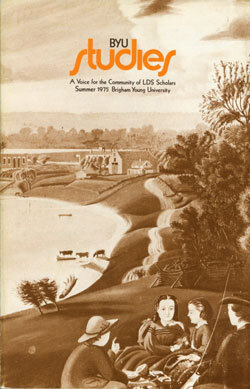Maynard Dixon
Artist of the West
Review
-
By
Ron Tyler,
Maynard Dixon is a well-known Western American artist of the second generation. Born in 1875 too late to witness the events of the “classic” West, he taught himself to draw and paint in the tradition of Frederic Remington and Charles M. Russell, with whom he corresponded and talked. After successfully illustrating for various New York magazines, Dixon returned to his native West to create an image that still endures, a Western characteristic long remembered by those who have shared with Dixon its starkness, its reality its grandeur.
A prolific artist, Dixon excelled with such masterpieces as The Golden Range and the Earth Knower. He produced murals for schools and public places throughout the West, although some of his best work was executed for Anita Baldwin, his patron. Dixon took seriously Remington’s advice to “draw—draw—draw.” He died in 1946, having finished hundreds of oil paintings, a personal and stylized record of the West according to “a realistic insight rare among artists.”
Burnside has sketched the facts of Dixon’s life quickly and neatly in a lengthy essay, treating Dixon’s influences and his circle of friends. Without delving into Dixon’s personal life too deeply, he has shown the effects of two disastrous marriages—one to Dorothea Lange—on Dixon’s work. Throughout the book Burnside’s economy of words and detail seems to speak of the man Dixon. One gathers that Dixon also would have appreciated Burnside’s economy, just as Dixon wasted no lines or details in his forceful, dramatic Indian portraits and landscapes. Because Burnside rarely peers beneath the surface—in fact, seems to have had few facts about Dixon’s personal life—one gathers that the artist was a loner, a man with few dose friends. Dixon seemed to value communication with the public through his pictures more than communication with his fellow artists. Naturally the reader is left wishing for a more intimate portrait.
Dixon’s record speaks well for itself. His earth-colored pictures, his stoic Indians, his homage to the cowboy and buffalo of the nineteenth century are familiar to most Westerners and are considered a part of Western history.
Brigham Young University Press has given both Burnside, a professor of art history there, and Dixon a splendid format—a handsome, oversized book lavish with wide margins, thirty-two color plates, and eighty-three black and white plates. Just as helpful to the scholar are the appendices: a catalog of Dixon’s oil paintings, his illustrations in books and periodicals, his exhibitions, and the locations of his murals.
Notes
- Eliza R. Snow’s Nauvoo Journal
- Some Thoughts Regarding an Unwritten History of Nauvoo
- Sickness and Faith, Nauvoo Letters
- Doctrinal Development of the Church during the Nauvoo Sojourn, 1839–1846
- Heber C. Kimball and Family: The Nauvoo Years
- Nauvoo’s Whistling and Whittling Brigade
- A Wall to Defend Zion: The Nauvoo Charter
- The Mission of the Twelve to England, 1840–41: Mormon Apostles and the Working Classes
Articles
- Nauvoo, a painting
Creative Art
- Charles C. Rich: Mormon General and Western Frontiersman
- Wit & Whimsy in Mormon History
- Maynard Dixon: Artist of the West
- Twelve Mormon Homes Visited in Succession on a Journey through Utah to Arizona
- Ina Coolbrith: Librarian and Laureate of California
Reviews
- The Apostle Peter and the Kirtland Temple
Notes and Comments
- Mormon Bibliography 1974
Bibliographies
- Index, Volume 15
Indexes
Purchase this Issue
Share This Article With Someone
Share This Article With Someone
Wit & Whimsy in Mormon History
Print ISSN: 2837-0031
Online ISSN: 2837-004X


